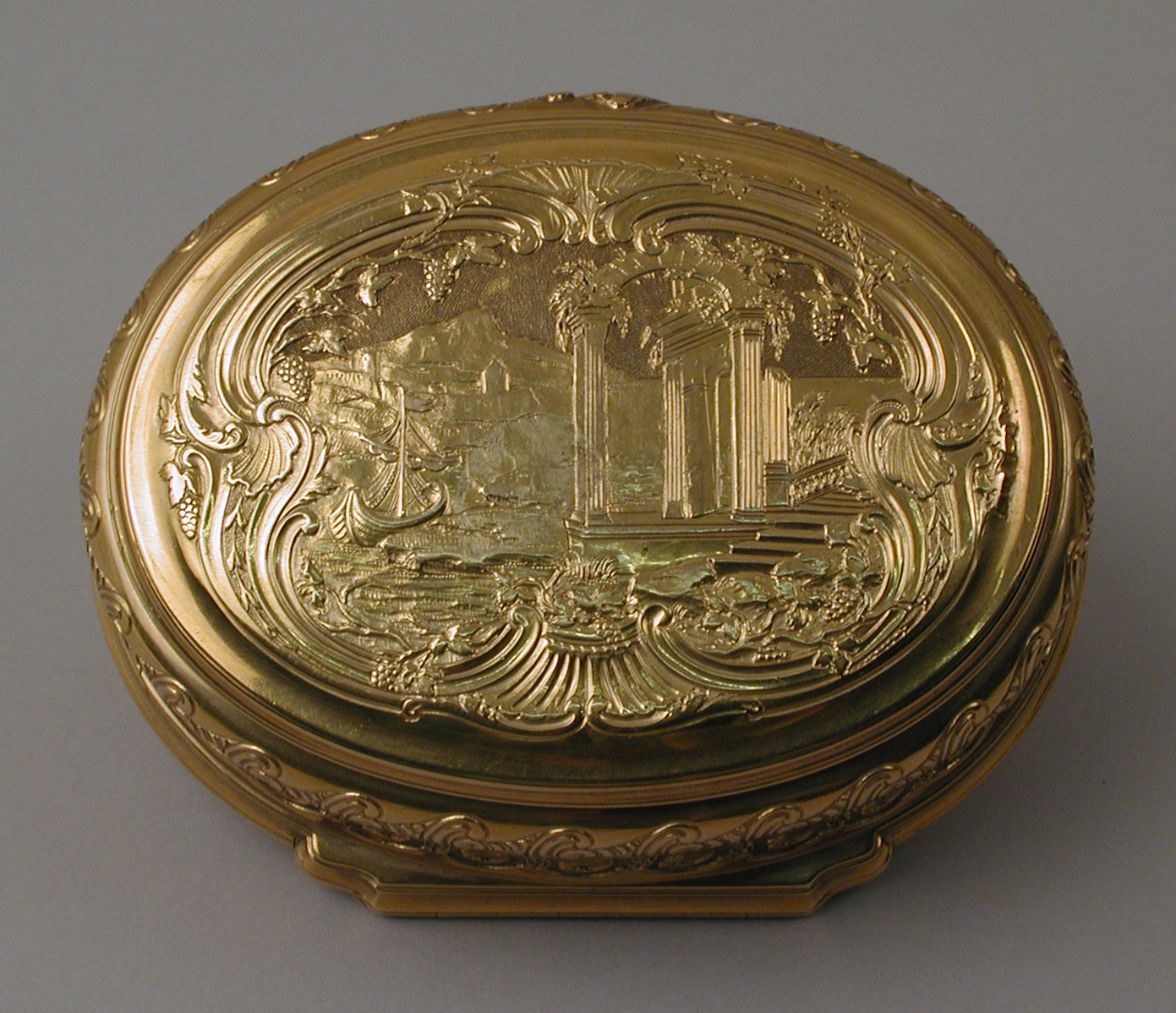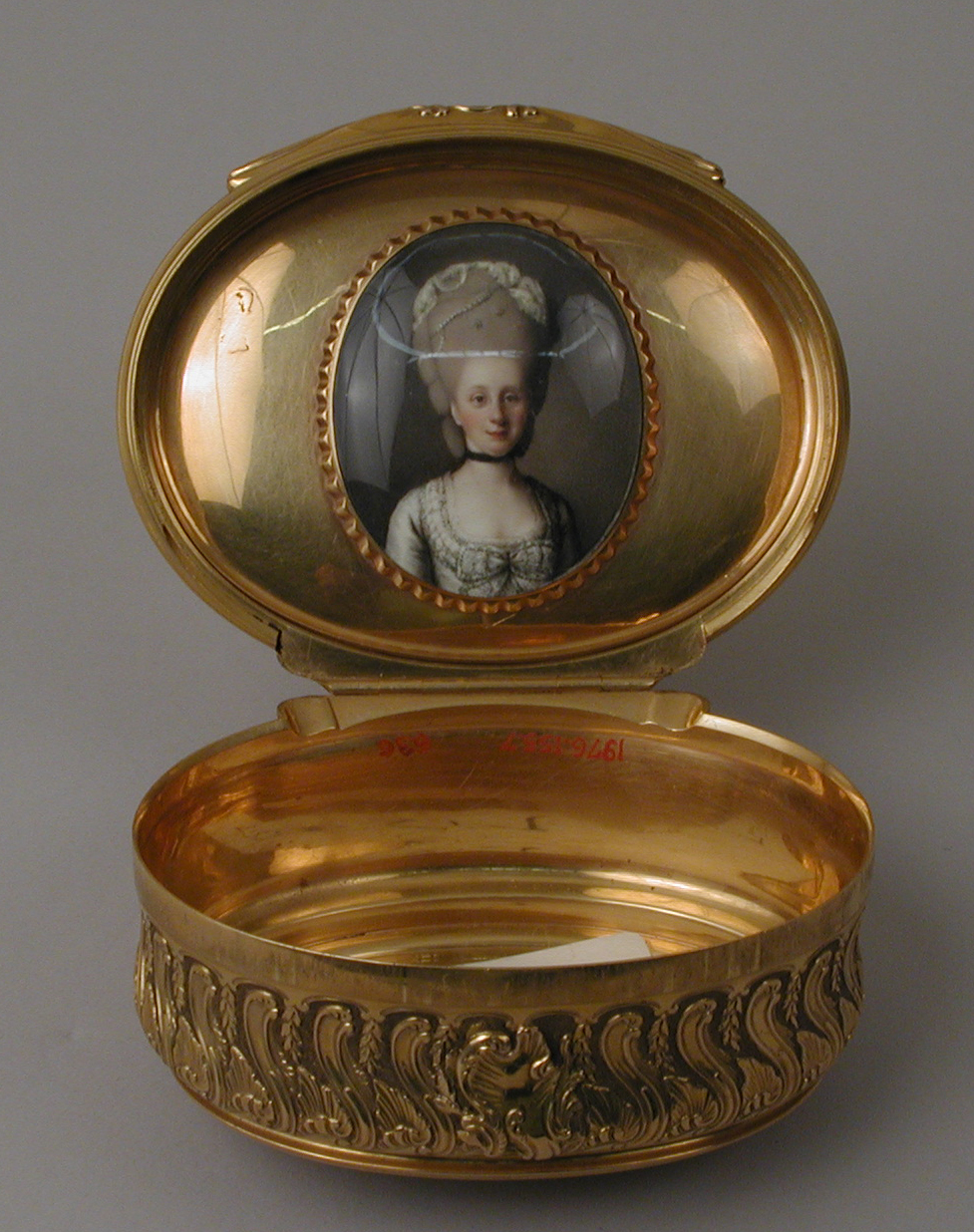Snuffbox
The basic design of snuffboxes was to a certain extent determined by their function. As the ritual of taking snuff required holding the box in one hand while taking a pinch of the powdered tobacco with the other, a snuffbox had to fit comfortably in the palm of one’s hand. The use of a hinged lid on the box minimized any spillage, and the lid had to fit very snugly in order to keep the snuff dry. In addition, the box had to open to a precise angle that would permit easy access to the contents while allowing it to remain stable with the lid raised. The French gold-box makers became extremely skilled in the techniques of construction, as evidenced here, for example, in the visual absence of solder and the beautifully engineered hinges that were standard on most boxes of the eighteenth century.
Jean Ducrollay was one of the finest of the Parisian goldsmiths, and this is an early example of his work. Like the snuffbox in gold and diamonds made a few years earlier, its decoration reflects the nascent Rococo style, which favored a prominent use of scrolls and S-curves and asymmetrical compositions.
Despite the widespread popularity of snuff and the beauty of many of the boxes created to hold it, snuff taking had its detractors, including the sister-in-law of Louis XIV, Élisabeth-Charlotte, duchesse d’Orléans, who wrote to her half-sister Luise von Degenfeld on August 5, 1713: “Tobacco is horrible stuff. I sincerely hope that you don’t take it. It makes me furious to see the women here with their noses as dirty as if they had plunged them into filth. They put their fingers into the snuff boxes of every man they meet. I confess that makes me thoroughly disgusted.”
Due to rights restrictions, this image cannot be enlarged, viewed at full screen, or downloaded.
This artwork is meant to be viewed from right to left. Scroll left to view more.




